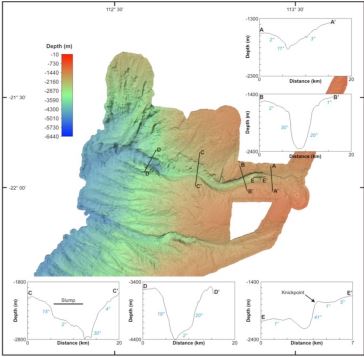[IIOE2-EP33] Exploring the marine biodiversity of the submarine Cape Range Canyon, north Western Australia
Lead Investigator :
- Nerida Wilson,Western Australian Museum,49 Kew St, 6109, Welshpool, Western Australia
nerida.wilson@uwa.edu.au
Other Key participants (s):
- Lisa Kirkendale, Western Australian Museum, Australia
Lisa.kirkendale@museum.wa.gov.au - Michael Bunce,Curtin University, Australia
michael.bunce@curtin.edu.au - Rachel Przeslawski,Geoscience Australia, Australia
Rachel.Przeslawski@ga.gov.au - Andrew Hosie, Western Australian Museum, Australia
Andrew.Hosie@museum.wa.gov.au - Glenn Moore, Western Australian Museum, Australia
Glenn.Moore@museum.wa.gov.au - Zoe Richards,Curtin University, Australia
zoe.richards@curtin.edu.au
Period of Project: March 2020 to April 2020
Brief description of the Project:
Until now, little attention has been paid to submarine canyons in the East Indian Ocean. The Cape Range Canyon system has recently been mapped and geologically characterized. However, nearby gas initiatives represent an ongoing threat. Modelling has shown that Cape Range Canyon is a source of larvae to downstream canyons. This survey will characterise marine biodiversity in a deep canyon adjacent to the world heritage listed Ningaloo reef. In addition to a comprehensive taxon survey, we will carry out experiments to assess the effectiveness of this survey methodology, by ground-truthing the surrounding waters with an eDNA survey. The resulting data will likely reveal significant but undocumented biodiversity. This collaborative project will use ROV sampling to understand the benthic community, contribute to effective conservation approaches, and provide opportunities for student participation and community engagement. Museums strive to document, describe and archive biological resources, with a long-term approach to sample and data management. The WA Museum is uniquely positioned to share outcomes and data to the public and stakeholders, and be the custodian of these valuable samples for future work.
Region of study:
The proposed study site, the submarine Cape Range Canyon, has its upper reaches in a multiple use zone of the Gascoyne Marine Park, of which only 44% is mapped; very little is known about biodiversity in its deep water habitats (Daniell et al 2010). However, its lower reaches are close to a proposed mining lease, in a habitat protection zone, which prohibits mining. Understanding what biodiversity occurs in these zones is paramount to activating effective management processes. Figure with false-colour imagery of Cape Range Canyon (upper) and Cloates Canyon (lower).Representative profiles of the CRC show incised canyon morphology (A-D) and knick-point in upper reaches (e) (Daniell et al 2010).


